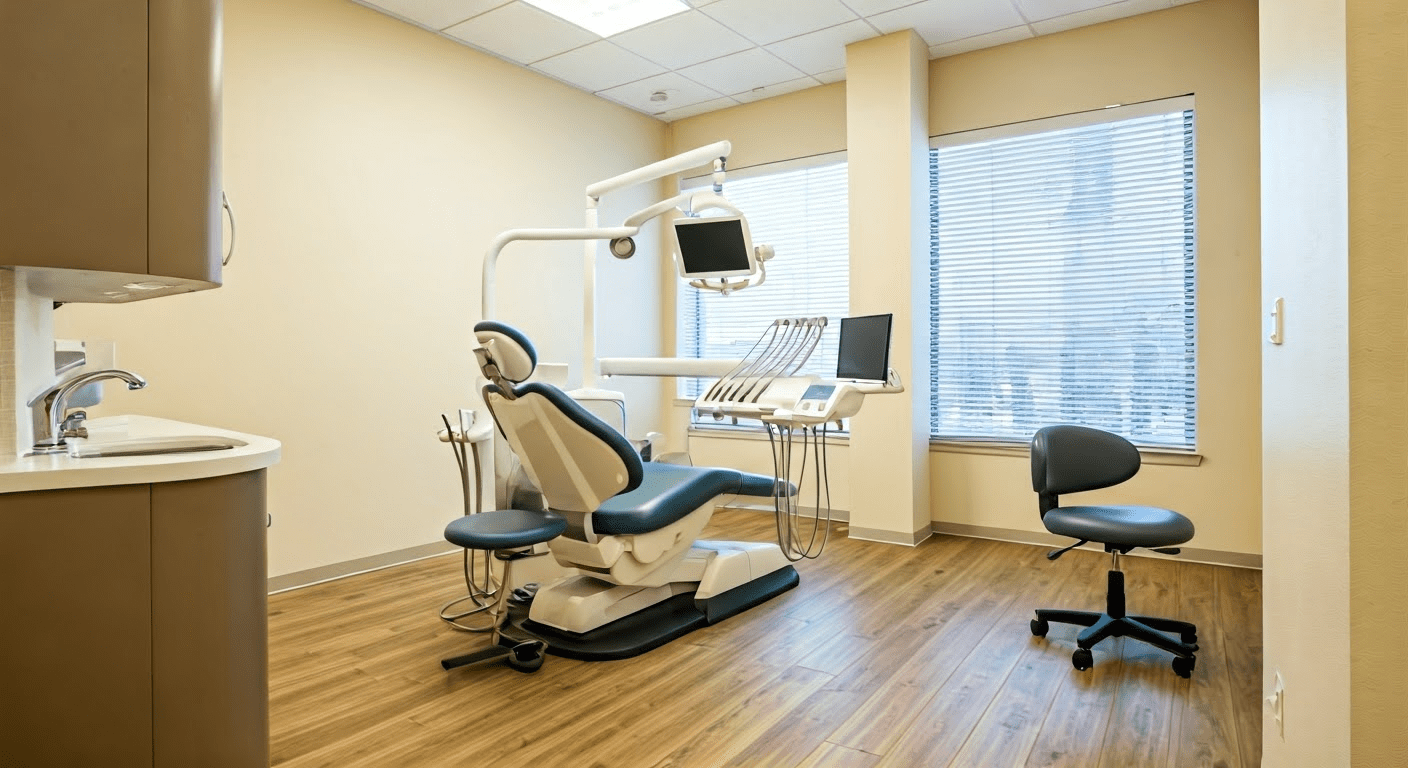12 KPI for Dental Practice: Track Your Office Performance

Running a dental practice isn’t just about great clinical care—it’s about knowing how well your office is actually performing behind the scenes. Are patients returning? Is your team hitting production goals? Are no-shows and patient attrition affecting your revenue? These aren’t just numbers—they’re indicators of how smoothly (or not) your practice runs daily.
That’s where KPIs—Key Performance Indicators—come in. Think of them as your practice’s health checkup. By tracking the right specific KPI in dental practice, you can uncover blind spots, optimize operations, and ultimately improve patient satisfaction and profitability.
Whether you’re a solo dentist trying to grow or managing a multi-location practice, having clarity on performance metrics can take the guesswork out of decision-making.
In this blog, we’ll discuss 12 essential KPIs every dental practice should track and why they matter.
What Are KPIs—and Why Should Dental Practices Care?

KPIs, or Key Performance Indicators, are more than just business buzzwords—they’re how you keep a pulse on your practice success. Instead of relying on gut feelings, KPIs give you real numbers to show what’s working and what’s not. They are your behind-the-scenes scorecard for growth, efficiency, and patient satisfaction.
For example, tracking new patient numbers shows whether your marketing is actually bringing people in. It also monitors your attrition rate, which tells you if patients are sticking around or slipping away.
When you measure the right things, you’re not just guessing your way through decisions—you’re making smarter moves backed by data. And that kind of clarity makes all the difference in a busy dental office.
Top 12 KPIs to Monitor for Effective Dental Office Management
If you want your dental office to run like a well-oiled machine, tracking the right KPIs isn’t optional—it’s essential for making informed business decisions. These numbers are a great way to tell the real story of how your practice is doing behind the scenes. They help you figure out what’s working, where you’re falling short, and how to fix it. Each KPI offers a bigger picture, from the number of procedures you do to how many new patients walk through the door.
Let’s break down the most important ones that every dental practice should keep an eye on:
1. Production Metrics
Production metrics are like snapshots of your practice’s actual performance. They show the number of procedures performed and the revenue generated by those treatments. For example, if you notice that while new patient visits are up, your average revenue per patient isn’t budging, it might be time to evaluate how your team presents additional services like whitening, night guards, or fluoride treatments.
Let’s say you had 100 new patients this month, but your overall production didn’t grow. That could mean you’re not maximizing the treatment value per visit—either patients aren’t accepting treatment plans, or they’re only coming in for emergencies. Tracking the number of new patients and these dental practice metrics helps you spot trends like this early so you can make changes that improve both care and income.
2. Revenue and Profitability
Revenue shows how much money is coming in, and profitability tells you how much you actually keep. These two numbers are closely tied but not the same—you need both to be healthy.
Say you bring in $100K this month, but your overhead exceeds $85K. That leaves you with only $15K in profit, which might not be sustainable long-term. High revenue with low profit can signal inefficiencies, like overstaffing or inflated supply costs. Conversely, solid profit margins mean you’re managing your resources wisely and pricing your services appropriately.
3. Overhead Costs
Nobody likes discussing expenses, but ignoring them is a fast-track path to burnout. Overhead costs include staff salaries, rent, dental supplies, and utility bills. If you’re not tracking these closely, you could be bleeding money without realizing it.
For instance, your supply costs have been creeping up for months. By reviewing your overhead, you might spot an opportunity to switch vendors or renegotiate terms. The goal isn’t just to cut costs—it’s to spend smarter so your business remains both efficient and profitable.
4. Active Patient Count
This KPI tells you how many unique patients have visited your practice within a given timeframe—usually the last 12 to 18 months. The number of active patients is one of the most precise indicators of whether your practice is growing or shrinking.
Your marketing drives new leads, but your active patient count is flat. That might mean patients aren’t returning, and you have a retention problem. Conversely, a healthy and growing patient count shows that people trust your team and keep coming back for care.
5. New Patient Acquisition
Bringing in new patients is the lifeblood of any growing dental practice. These dental practice metrics help you measure the effectiveness of your outreach efforts, whether they’re local SEO, Google reviews, community involvement, or referral programs.
For example, running a Facebook ad offering free consultations and seeing a spike in new patients is a success. But that’s another conversation if those patients don’t convert into long-term relationships. Tracking this KPI helps you understand how many new patients you attract and how valuable they are to your practice over time.
6. Patient Retention Rate
Getting new patients is excellent, but keeping them is even better. Your patient retention rate tells how many people return after their first visit. It directly reflects their experience with your staff, the quality of care you provide, and your follow-up process.
If patients ghost you after one cleaning, that’s a red flag. Maybe they felt rushed, weren’t educated on their next steps, or didn’t see value in their visit. On the other hand, high retention usually means your office is doing something right—patients feel heard, cared for, and motivated to maintain their oral health.
7. Average Production per Patient
This metric looks at the average revenue you generate per patient. It’s beneficial for spotting missed opportunities in case presentations or preventive care.
Let’s say two hygienists see the same number of patients, but one consistently generates higher production. That hygienist is more comfortable recommending additional services or better at explaining the benefits of treatment plans. Understanding that gap gives you a roadmap for training and coaching your team.
8. Case Acceptance Rates
How often do your patients actually say “yes” to the treatment plans you present? That’s your case acceptance rate, one of the most telling indicators of your communication skills and patient trust.
Imagine you’re recommending a crown to five patients, and only one agrees. That’s a 20% acceptance rate—and a sign that something might be off. Maybe you’re using too much jargon, not giving clear financial options, or simply not listening to patients’ concerns. Improving this metric is about building trust, not pressure.
9. Appointment Adherence
This KPI tracks how often patients actually show up for their appointments. Cancellations and no-shows don’t just mess with your schedule—they hit your bottom line hard.
If you see many last-minute bailouts, it might be time to review your reminder system. Are you texting reminders? Are you offering easy rescheduling options? Do patients know there’s a fee for no-shows? Improving appointment adherence helps your day run smoother and maximizes productivity.
10. Hygiene Visit Frequency
Preventive care is the foundation of every dental office, starting with consistent hygiene visits. If patients only come in when something hurts, you’re missing out on steady revenue and, more importantly, better patient health outcomes.
Encouraging patients to stick to their 6-month cleanings can be as simple as educating them during visits and sending friendly reminders. Over time, this builds trust, improves compliance, and fills your schedule with recurring appointments that keep the practice humming.
11. Collection Rate
Even if your production numbers are strong, it doesn’t mean much if the money isn’t hitting your account. The collection rate measures how much of your billed services actually get paid. If this number is low, there might be a lag in insurance claims, unclear patient billing, or outdated payment processes.
For example, patients with high-deductible plans struggle to pay their balances. Offering financing options or precise upfront estimates can make a huge difference. A healthy collection rate means reliable cash flow and fewer headaches.
12. Cancellations & No-Shows
While you can’t eliminate no-shows entirely, tracking them gives you insight into where things might be slipping. It’s important to keep a close eye on a high cancellation rate, as this could signal that patients are booking too far out, forgetting appointments, or losing interest in care.
Let’s say Mondays are your worst day for no-shows. Maybe weekend appointment reminders aren’t getting seen. Adjusting your scheduling flow, adding confirmation texts, or offering last-minute openings to standby patients can help fill those gaps and keep your day productive.
Leveraging Analytics: What to Look for in Dental KPI Software
If you’re serious about scaling your dental practice, your KPI software needs to do more than spit out numbers. The right tool should give you actionable insights into the most important KPIs—not overwhelm you with data dumps. Here’s what your dental KPI software should absolutely provide:
1. All-in-One Metric Tracking
Your practice management software should track everything—from production volume and overheads to no-show rates and patient retention—without needing separate tools or manual work. Think of it as your practice’s performance dashboard, all in one place to ensure you maintain practice profitability.
2. Plug-and-Play Integrations
The software should connect with your existing systems—EHR, billing, scheduling, and marketing—without hours of IT setup. Real-time syncing ensures you’re not chasing reports or patching together spreadsheets. If integration isn’t seamless, you’re wasting time and risking errors.
3. A Dashboard You’ll Actually Use
Clunky dashboards mean data you’ll never look at. Your software should offer a clean, intuitive interface with customizable views. Whether it’s daily production goals or hygiene reappointment rates, the right dashboard quickly surfaces the numbers that matter to you.
4. Team Onboarding & Ongoing Support
Let’s be real—switching systems is never fun. However, your software provider should offer hands-on training, live support, and helpful resources to get your team up to speed quickly. If they just send you a login and a user manual, that’s a red flag.
Practice by Numbers: Smarter Growth Starts with the Right KPIs
If you still rely on gut instincts or scattered reports to manage your dental practice, you leave opportunities on the table. Practice IQ by Practice by Numbers puts 600+ customizable KPIs at your fingertips—giving you total visibility into everything from reappointment rates to revenue per provider. With real-time dashboards, daily huddle tools, and seamless integration with systems like QuickBooks, raw data can be transformed into clear, actionable insights that you can use.
Whether you’re a solo practitioner or managing multiple locations, Practice IQ helps you spot gaps, track goals, and boost profitability—without drowning in spreadsheets. It’s more than analytics; it’s the growth engine your practice needs to stay competitive, efficient, and laser-focused on what matters most: delivering exceptional care backed by smart, data-driven decisions. Book a personal demo with us by calling 866-216-8416.
Conclusion: Turn KPIs Into Real Results for Your Practice
Let’s face it—running a dental practice isn’t just about clinical work anymore. It’s also about smart decision-making. And that’s where KPIs come in.
Think of them as your practice’s GPS. They don’t just show you where you are—they help you course-correct, avoid roadblocks, and reach your goals faster. Whether spotting patient drop-off points, tackling inefficiencies, or identifying growth opportunities, KPIs give you the clarity you need to act confidently.
And here’s the good news—you don’t need to become a data analyst to make this work. The right dental KPI software should do the heavy lifting. It should track the right metrics, talk to your existing systems, give you data you can use (not just look at), and support your team every step of the way.
Over time, as you keep tabs on the numbers that matter, you’ll start seeing a clear picture of what’s working—and what needs tweaking. That’s how you build a practice that’s not just busy but thriving. One that delivers great patient care and drives consistent business growth.
Because at the end of the day, success isn’t guesswork—it’s strategy backed by the correct data.
Frequently Asked Questions
What is considered a good patient retention rate in dentistry?
A good patient retention rate in dentistry hovers around 85 to 90%. Higher rates signify a successful patient relationship strategy, indicating that patients trust your services and continue to seek care at your practice.
What common challenges do dental practices face when implementing KPIs?
Implementing KPIs may be challenging, as people may resist change, lack technological proficiency, have difficulty integrating new software with existing systems, and have concerns about the time invested in data analysis. Understanding the significance of various KPIs and interpreting the data accurately may also pose challenges.
How often should dental practice KPIs be reviewed?
Dental KPIs should be reviewed continuously, depending on their specific nature. While some metrics, like production volume and collection rates, can be monitored daily, others, like patient acquisition and retention rates, may require monthly or annual review.
How do KPIs help in measuring the success of a dental practice?
Monitoring KPIs provides a comprehensive view of your practice’s performance, highlighting strengths, identifying areas of improvement, and monitoring progress toward your financial goals. It aids strategic planning and steers your practice towards sustainable growth, profitability, and enhanced patient satisfaction.





